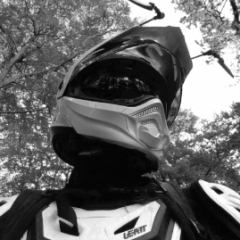-
Posts
17,957 -
Joined
-
Days Won
733
Content Type
Profiles
Blogs
Forums
Gallery
Pipeline Tools
3D Wiki
Plugin List
Store
Downloads
Everything posted by Cerbera
-
Again, interesting ! This scene does appear to do what I am expecting you want, but now takes 21 seconds per frame to do it (standard render) whereas the previous version took 2 seconds per frame ! What is the difference between the 2 files please ? CBR
-
Interesting. This does render in my version of R25, but not sure it's the result you are looking for... tick.mp4 I admire the thinking, and indeed my own was going a similar way initially. But whilst we can alter the length / growth of hair over time via vertex maps etc I don't think we can ever make it disappear completely can we, which might be the Achilles heel in this setup... CBR
-
Please don't remove posts once a solution is found - the idea of forums is that they stay around to help others who may be experiencing similar issues ! CBR
-
Wow - if that was the case I didn't know about it ! 🙂 I suspect what you are talking about may not apply any more in 24 onwards since there is no longer any distinction between component modes and UV component modes - perhaps that is the difference, or reason for it.... however I can confirm the UV Magnet tool in R25 definitely doesn't work in the regular viewport. CBR
-
Welcome to the Core 🙂 Please make sure to complete your profile before asking questions, so we have all the info we need to be able to help, at least which version you are using... Oh dear. It is not a good idea to apply live hair to a live generated object that is constantly changing shape and size, especially one that starts off not there at all; indeed I am surprised you can make that work in any way at all ! Does the hair object not just disappear at frame 0, when there is no geo to hang it on ?! 'Is there any way around that?' is the question, and I do worry the answer may be 'no'. I'll have a think about that. But if it is working in any way at all for you (and it isn't for me!) the best chance you have with the current setup will be to set the hair distribution mode to Polygon Area, so that the hair is not tied to the ever-changing position of actual component geometry. CBR
-
I am confused by the question, because I don't think we have ever been able to drag UVs anywhere except on the UV canvas, or via the texture mode gizmo when we are using standard projections. Perhaps you are referring to the Interactive Mapping command in BP UV edit ? CBR
-
Considerably bigger update than Max got hey ?! Surprised you're learning that, @Igor... Houdini I totally understand, and Blender I suppose because it is free, but just wondered why you wouldn't stick with Cinema, software you already know really well, for all the things Houdini is not needed for... CBR
-
By far the most difficult thing about character work is the actual animation itself, so if you don't have to do that, then that is a lot of time saved. You might be able to get away with Character Object for the rig and pose morph for facial expressions, both of which are pretty quick and easy to set up... CBR
-

How can I anchor Capsule and Node icons on my custom Layout ?
Cerbera replied to HappyPolygon's topic in Nodes
Not a plug-in. Search Asset browser for 'FUI'. If it is publicly available now (and Chris seemed to think it was on today's Rocket Lasso) it should appear in the Asset browser for anyone subscribing. CBR -

How can I anchor Capsule and Node icons on my custom Layout ?
Cerbera replied to HappyPolygon's topic in Nodes
You can add capsules to palettes (I've done it with Chris's FUI elements), but as far as I can see, not that specific New Node Command I think, which, judging from its greyed-out context property in Command Manager can't be used with any other context than node layout. I imagine that is intentional. CBR -
I would estimate about 8 hours to model and UV a character like that, with suitable edge flows for animation. Longest time will be getting hair and clothes right. CBR
-
I have moved it to correct section for you... CBR
-
Welcome to the Core 🙂 Good to have you onboard ! Lots of great stuff in Cinema for the creation of abstract art. May your learning and sharing be equally excellent ! CBR
-
You're welcome... They do ! Indeed I know the answer to this because it has been asked before here 😉 CBR
-
Is it because you have auto-normalize turned on in the weight brush ? CBR
-
The other program where I notice it really badly is Steinberg's Cubase Pro 11. That will tick along at maximum speed for a couple of days then suddenly there will be a horrible delay before any command you issue, which gets incrementally worse over time, and that too is only solved by a restart of Windows. CBR
-
I suspect not. I have double that, and still experience the problem... CBR
-
Yes I notice this when Cinema / Windows has been running for a very long time. I think it's to do with memory management, and is a windows thing more than a Cinema thing... CBR
-
Almost certainly not 🙂 Dynamics are at their best and most useful when applied to a large number of interacting objects that it would be ludicrous to try and animate manually. They are NOT at their best when trying to achieve specific directed movement with a single element or two. By adding dynamics I would say you do little more than complicate the setup for not much gain (rather swapping one set of problems for another, more nebulous and inexact set !), thereby losing some level of control along the way, and adding what I would describe as 'unhelpful randomness', that you will then end up battling to control to make it do precisely what you want. Whereas with keyframes, it will do exactly what you tell it to do, when you tell it to do it, repeatably, every time, without needing to be cached or simulated in real time, but of course then the quality of the animation relies entirely on your eye and animation skills to get a realistic-looking result. But that is something that is fairly easily learned, whereas making something dynamic to try and achieve directed specific movement a set number of times (ball bounces) before something else happens (ball flies off) is rather in opposition to what you want to achieve here, which is that very specific, directed movement. A good place to start would be this excellent rig and tutorial from Animation whizz @Vozzz... I think your bend-deformed diving board is the best and most helpful way of doing that, so personally, I wouldn't be tempted to dynamize that either ! 🙂 It might initially seem quite a protracted / frustrating experience to do your whole animation manually, but you will learn a lot of very useful skills from doing it that way, so I think that's an excellent way forward... CBR
-

Feedback Aventador - Inspired by Forza Horizon 2
Cerbera replied to Digital Dave's topic in Feedback
Superb 🙂 CBR- 1 reply
-
1
-
Harder than I'd like ! 🙂 To be honest for that sort of thing without Signal I would use C-motion rather than XPresso, which is delightfully not tied to the character object as some people imagine, and works on anything, in much the same sort of way that signal does, albeit perhaps not so simply or intuitively ! CBR

